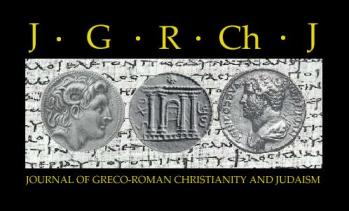21.1 | Craig S. Keener Asbury Seminary, Wilmore, KY Salt had many uses in antiquity, several of which might supply background to part or all of Mark 9:49-50. The article provides ancient background for each of these uses. These include sacrifices (Lev 2:13), preservative (note its use for preserving even human bodies by mummification), flavor and covenant relationship or table fellowship. Given the context in Mark 9:49-50, the preservative function of salt might be dominant, perhaps combined with salt’s use in sacrifice and cooking to relate to the preservation of resurrection bodies—possibly those of the damned burning in Gehinnom (9:43-48) and especially (and significantly more likely) for the preservation of the righteous tested by fire. Ultimately, Mark may apply the image especially to the salt of peace preserving the righteous when they come to the fiery eschatological test of judgment day.
|
21.2 | Reuben Y.T. Lee Canadian Chinese School of Theology Vancouver, Richmond, BC While many studies focus on proselytes in diaspora settings, this article explores those in Late Second Temple Judea, where the majority of the population surrounding them was no longer composed of non-Judeans and diaspora Judeans. While proselytes, along with other diaspora Judeans, resided in Judea, whether permanently or temporarily, they encountered the local Judeans in the predominantly Judean culture and society. The article investigates their conversion, pre- and post-conversion requirements, and status within a Judean context. It underscores that conversion was not necessarily a straightforward process of adopting Judean identity and customs. Apart from male circumcision, which served as a clear marker of transition, the diversity encompassed the customs that proselytes would adopt or expect to follow, as well as Judean interests in and concerns with these individuals. Judean boundaries with proselytes could have been formed because of situational factors or even through the Judeans’ imaginations.
|
21.3 | Sung Min Park McMaster Divinity College, Hamilton, ON
This research navigates the scholarly discourse on the Prestige Religious Language within the early Jerusalem church, focusing on the code choice for the dissemination of the Jesus tradition. The scholarly debate primarily centers around two hypotheses: (1) the ‘Aramaic Jesus Tradition’ hypothesis, which posits that Jesus’s teachings were initially conveyed in Aramaic and later translated into Greek, and (2) the ‘Early Greek Jesus Tradition’ hypothesis, suggesting that Greek was the original language of Jesus’s teachings in the earliest stage of first-century Christianity. The study challenges the Aramaic hypothesis for not adequately accounting for the complex linguistic choices in a multilingual context, advocating instead for a sociolinguistic approach to understand Peter’s use of Greek during the Pentecost sermon. Paul’s Greek preaching shows the early adoption of Greek as the Prestige Religious Language within the official settings of the Jerusalem church due to the complex multilingual environment where a large number of Greek speakers did not understand Aramaic. The findings suggest a higher likelihood of the Jesus tradition being circulated in Greek, highlighting the importance of sociolinguistic perspectives in unraveling the linguistic landscape of early Christianity.
|

